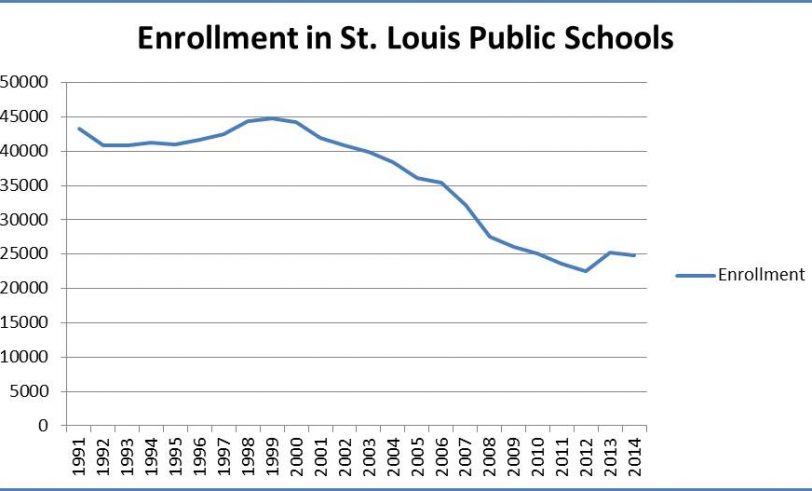Three Tips for Managing St. Louis Public Schools’ Enrollment Decline

The St. Louis Post-Dispatch reports that enrollment in St. Louis Public Schools (SLPS) is down by nearly 1,500 students. This should not come as much of a surprise, as enrollment in SLPS has been dropping for more than a decade. In recent years, however, it had leveled off. Now, district officials are scrambling for ideas to cut costs. At the same time, they are facing increasing pressure to give teachers, whose salaries have been stagnant for years, a raise.
While the situation is not good for SLPS, the impact on the budget will not be felt immediately. Missouri’s funding formula allows school districts to receive funds based on their highest enrollment over a three-year period. Assuming continuing decline, this year’s enrollment figures won’t fully be realized until 2018. In the meantime, SLPS officials must begin looking for ways to shore up the bottom line or begin attracting students back to the district.
Here are some options:
1. Sell vacant buildings: SLPS has a glut of vacant school buildings. The district must make every effort to lease, sell, or demolish the vacant school buildings. Every penny spent on maintaining empty buildings is a penny that cannot be channeled into the classroom and teacher salaries.
2. Consolidate or co-locate within underutilized buildings: According to the Post-Dispatch, SLPS also as a slew of underutilized school buildings; six with fewer than 200 students and three high schools with fewer than 300. Officials must consider closing some of these schools and consolidating students into the remaining buildings. Of course, this is never easy to do, as citizens fear another vacant building in their neighborhood and parents worry about their children being bussed further away. To prevent blight, district officials could look for alternative uses for these buildings. For example, they could share the buildings with charter schools or private schools in need of space. By allowing these entities to co-locate but remain distinct organizations, underutilized buildings can once again be filled with children and even generate revenue for the district.
3. Restructure staffing models: Salaries are one of the biggest costs in public education. Now is a perfect time for the district to restructure staffing models. As Mike McShane pointed out, the district can curb administrative bloat and redesign the district’s compensation system. The district can also begin exploring alternative ways to deliver education and expand the reach of great teachers, such as blended learning models. The traditional model of a teacher in front of 18 students hasn’t been working and is incredibly expensive.
Curbing decades-long enrollment declines is a daunting task, and it will only be more difficult if the district fails to make appropriate changes. Indeed, significant changes to improve efficiency may be the only way to change the district’s trajectory.

